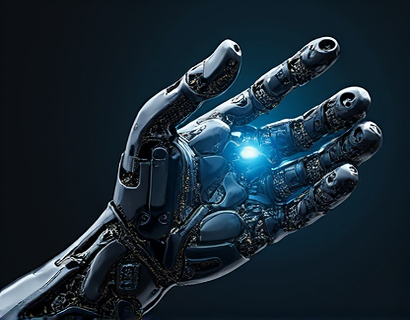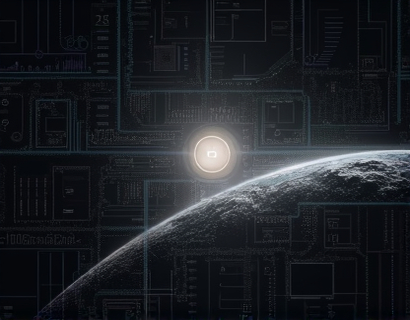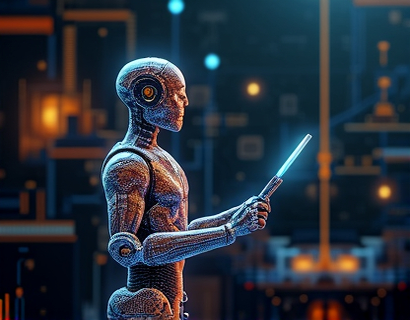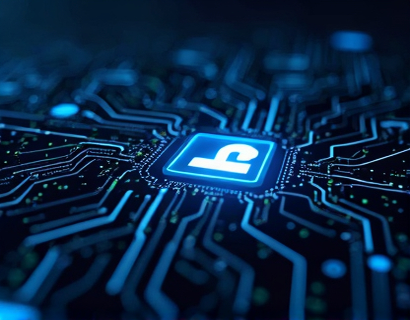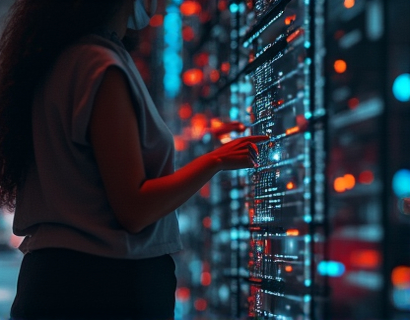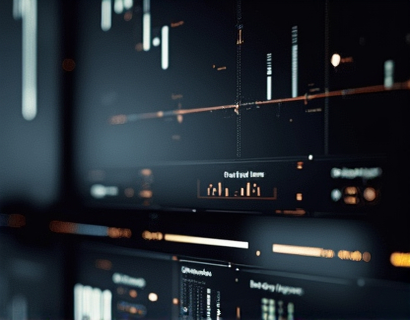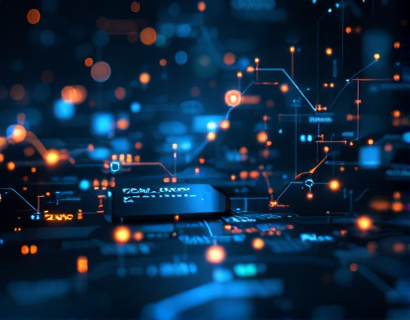Transforming Digital Experiences: The Synergy of Crypto and AI
The intersection of blockchain technology and artificial intelligence (AI) is giving rise to a new era of digital innovation, one that promises to redefine how we interact online and conduct business. This transformative synergy is not just about merging two advanced technologies but about creating a seamless, secure, and intelligent digital ecosystem that enhances user experiences and drives substantial growth. For tech innovators and early adopters, understanding how to leverage this integration is crucial for staying ahead in the rapidly evolving tech landscape.
Understanding Blockchain and AI
Blockchain technology, at its core, is a decentralized ledger that records transactions across multiple computers in such a way that the registered transactions cannot be altered retroactively. This inherent transparency and security make it an ideal foundation for trustless systems where intermediaries are minimized or eliminated. On the other hand, AI involves the simulation of human intelligence processes by machines, particularly computer systems. These processes include learning (the acquisition of information and rules for using it), reasoning (using rules to reach approximate or definite conclusions), and self-correction.
The integration of blockchain and AI leverages the strengths of both technologies. Blockchain provides a secure and transparent environment for AI algorithms to operate, ensuring data integrity and reducing the risk of manipulation. AI, in turn, can analyze vast amounts of data stored on the blockchain, extracting insights and patterns that can be used to improve decision-making processes and enhance user experiences.
Enhancing Security and Trust
One of the most significant benefits of combining blockchain and AI is the enhancement of security and trust in digital interactions. Blockchain's immutable nature ensures that once data is recorded, it cannot be altered, providing a tamper-proof record. AI can monitor and analyze transactions in real-time, detecting anomalies and potential security threats before they become issues. This dual-layer approach not only protects user data but also builds trust among users, a critical factor for the adoption and success of any digital platform.
For instance, in financial services, blockchain can ensure the secure and transparent transfer of assets, while AI can optimize trading strategies and risk management. The combination results in a system that is not only secure but also intelligent and adaptive, capable of responding to market changes and user needs in real-time.
Optimizing User Experiences
The integration of blockchain and AI can significantly enhance user experiences by personalizing interactions and ensuring seamless connectivity. AI algorithms can analyze user behavior and preferences, providing tailored content and recommendations. On a blockchain-based platform, this data can be securely stored and managed, ensuring privacy and control for the user. The result is a more engaging and personalized digital experience that keeps users coming back.
Consider a digital marketplace where AI-driven chatbots handle customer service, resolving issues quickly and efficiently. These chatbots can be powered by blockchain to ensure that user interactions and preferences are securely stored and used to improve future interactions. This not only enhances the user experience but also builds a loyal customer base.
Improving Data Management and Privacy
Data management and privacy are critical concerns in the digital age. Blockchain technology offers a decentralized and secure way to manage data, while AI can help in optimizing data usage and ensuring compliance with privacy regulations. By using blockchain, sensitive data can be encrypted and stored in a distributed manner, reducing the risk of data breaches. AI can then process this data to derive valuable insights without compromising user privacy.
For example, in healthcare, patient data can be stored on a blockchain, ensuring that it is secure and accessible only to authorized parties. AI can analyze this data to provide personalized treatment recommendations, all while maintaining strict privacy controls. This approach not only improves patient outcomes but also complies with regulations such as GDPR.
Driving Decentralized Applications
Decentralized applications (dApps) are a prime example of how blockchain and AI can transform digital experiences. dApps leverage blockchain for decentralized governance and AI for intelligent functionality. These applications can operate without a central authority, reducing the risk of censorship and increasing resilience. AI can enhance dApps by providing intelligent features such as predictive analytics, natural language processing, and automated decision-making.
Consider a decentralized social media platform where users have control over their data and interactions. AI can curate content based on user preferences, detect and filter misinformation, and facilitate meaningful connections. The decentralized nature of the platform ensures that no single entity has control, promoting a more democratic and user-centric environment.
Fostering Innovation and Collaboration
The synergy of blockchain and AI fosters an environment of innovation and collaboration. Developers and businesses can build on existing blockchain frameworks and AI models, creating new and exciting applications. This ecosystem encourages open-source development and community-driven projects, accelerating the pace of innovation. The integration of these technologies also facilitates collaboration across industries, leading to breakthrough solutions that address complex challenges.
For instance, in the supply chain industry, blockchain can provide a transparent and immutable record of transactions, while AI can optimize logistics and predict demand. Companies from different sectors can collaborate on a blockchain-based platform, using AI to streamline operations and enhance efficiency. This collaborative approach not only drives growth but also sets new industry standards.
Challenges and Considerations
While the potential of blockchain and AI is vast, there are challenges and considerations that must be addressed. Scalability remains a significant issue for blockchain, as transaction speeds and throughput need to improve to support widespread adoption. AI models require substantial computational resources and data, raising concerns about energy consumption and environmental impact. Additionally, regulatory frameworks are still evolving, and ensuring compliance is crucial for any blockchain and AI solution.
To overcome these challenges, continuous research and development are essential. Innovations in blockchain technology, such as sharding and layer 2 solutions, can enhance scalability. For AI, advancements in energy-efficient algorithms and sustainable data practices can mitigate environmental concerns. Engaging with regulatory bodies and staying informed about legal requirements can help ensure compliance and foster trust.
Roadmap for Success
For tech innovators and early adopters looking to leverage the power of blockchain and AI, here is a roadmap for success:
- Educate Yourself: Gain a deep understanding of both blockchain and AI technologies, their applications, and their limitations.
- Identify Opportunities: Look for areas where blockchain and AI can create value, such as enhancing security, personalizing user experiences, or optimizing processes.
- Build a Prototype: Start with a small-scale project to test the integration of blockchain and AI. This will help identify potential issues and refine the approach.
- Collaborate: Engage with a community of developers, researchers, and industry experts to share knowledge and resources. Collaboration can accelerate innovation and provide valuable insights.
- Ensure Compliance: Stay informed about regulatory requirements and ensure that your solution complies with relevant laws and standards.
- Iterate and Improve: Continuously gather feedback and data to refine and enhance your solution. The tech landscape is dynamic, and adaptability is key to long-term success.
By following this roadmap and embracing the transformative power of blockchain and AI, tech innovators and early adopters can drive substantial growth and engagement in the digital ecosystem. The future is bright for those who are willing to explore and harness the potential of these cutting-edge technologies.




